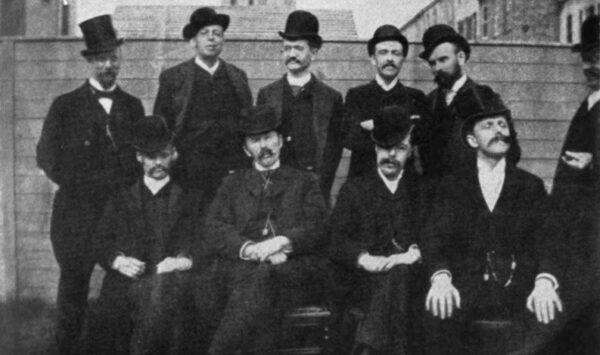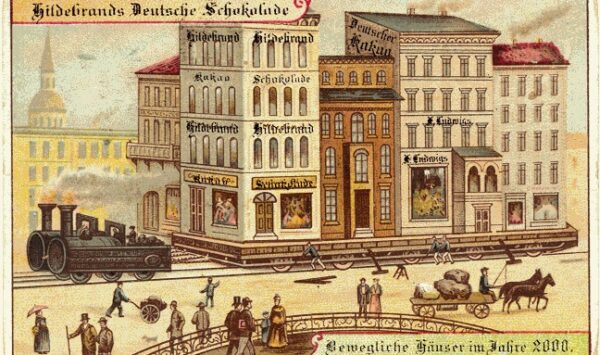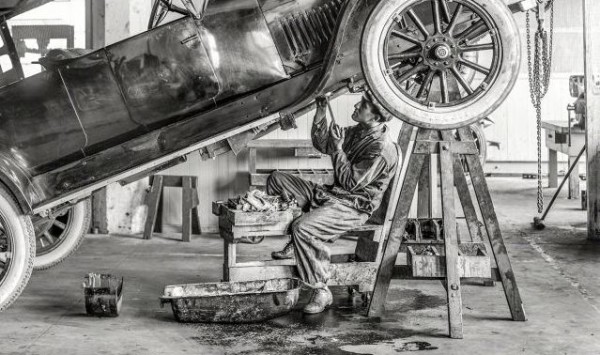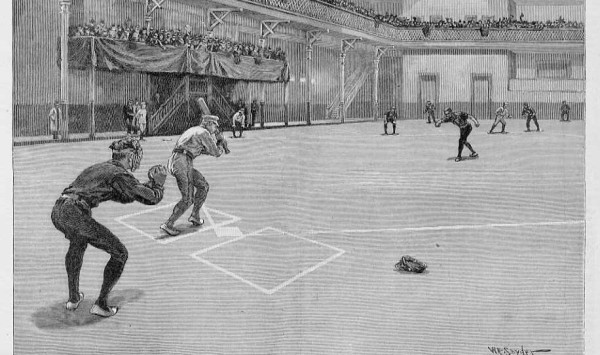WOOLWORTH’S BEDSTUY BACKYARD (1889)

******************************************************************************************************************************** Brownstone Detectives investigates the history of our clients’ homes. The story you are about to read was composed from research conducted in the course of one of those investigations. Do you know the history of YOUR house? ******************************************************************************************************************************** In 1889, the head of the Woolworth “5 & dime” store chain, Frank Woolworth, bought a substantial brownstone house, No. 209 Jefferson Avenue, in what would become the Bedford-Stuyvesant section of Brooklyn. Their home would soon become the center of life for the Woolworth family – and their friends and co-workers. After purchasing the brownstone in 1889, Frank Woolworth would frequently entertain his business associates there, bringing them together, at least once a year, for what he termed a “Grand Five and Ten Reunion.” These reunions lasted two or three days and were jolly affairs, generally culminating in a picnic or a seashore excursion, with plenty of food and liquid refreshment. The first “reunion” would be held just a month-and-a-half after buying No. 209 and would be held annually through the early 1890s. The picture above is from their first “reunion” in 1889. All of Woolworth’s regional managers, who were often family members, posed with Frank (seated with his topper at right) at a side fence, likely the one on the west side of their property as you can see buildings along Nostrand Avenue. Follow @BrownstoneDetec Share ———————————————————————————————————————– The Brownstone Detectives Brownstone Detectives is an historic property research agency. Our mission is to document and save the histories of our clients’ […]
HOW TO MOVE A ROW OF BROWNSTONES (1905)

******************************************************************************************************************************** Brownstone Detectives investigates the history of our clients’ homes. The story you are about to read was composed from research conducted in the course of one of those investigations. Do you know the history of YOUR house? ******************************************************************************************************************************** It was called “one of the most unusual examples of housemoving” ever. Up until 1905, no one had ever attempted it. And it was moving two rows of five Brooklyn brownstone houses together, as a row each, one, across the street, and one across a block AND a street. Contractors, experienced in the business, had – to this point – only moved much lighter frame houses, even rows of frame house. But a row of brownstone houses? Impossible! Over a course of several weeks, though, two rows of brownstone houses were jacked up, stabilized – and then rolled away. These same brownstone houses now sit across the street on Jefferson Avenue – as though they had always been there. MAKING WAY FOR THE EXTENSION It all started in the Bedford-Stuyvesant section of Brooklyn, when the State of New York decided it needed more room for an extension to an armory it owned on Sumner Avenue. The armory, bound by Sumner Avenue on the west, Putnam Avenue on the north, and Jefferson avenue on the south, could only expand in one way – into two rows of brownstones. Behind the armory, on Putnam Avenue, sat a row of brownstones from the 1880s, while, on Jefferson Avenue, a more recent vintage of brownstones […]
GOD’S OIL & LUBE SHOP (1903)

******************************************************************************************************************************** Brownstone Detectives investigates the history of our clients’ homes. The story you are about to read was composed from research conducted in the course of one of those investigations. Do you know the history of YOUR house? ******************************************************************************************************************************** By 1903, builder Wilfred Burr had moved into his second decade of house building, putting up brownstones and limestones around Stuyvesant Heights at a quick clip. Within his first decade in the profession he had managed to build hundreds of them. He was just 35, and was living with his wife, son, two daughters, and his mother-in-law (and two Swedish servants) at 555 Jefferson Avenue, but he was starting to become restless with the monotony. Able to purchase lots, put up buildings and sell them – almost with his eyes closed by this point – he began to look for something additional to do with his life outside of the construction business, seeking some way to spend his expendable income on an investment that excited him – something that was new and different. The new automobiles held that cache. They were fast, they were complicated – and his wife did not like him driving them. BUILDING THE AUTOMOBILE At some point, Wilfred and one of his bowling partners, secretary of the St. James Bowling Club, Robert W. Haff, had hatched the idea to bring a new and exciting automobile company to Brooklyn. This new-fangled piece of machinery was in its infancy, but more and more people – especially those with expendable […]
INSIDE SUMNER ARMORY – BASEBALL! (1895)

******************************************************************************************************************************** Brownstone Detectives investigates the history of our clients’ homes. The story you are about to read was composed from research conducted in the course of one of those investigations. Do you know the history of YOUR house? ******************************************************************************************************************************** Back in the day, in addition to drilling the troops, our national guard reserve units used to utilize our armories the way we all hope they’ll be used again one day – for exercise and fitness. Here at the 13th Regiment Armory (formerly known as the Sumner Armory on Sumner Avenue [now known as Marcus Garvey Boulevard] between Jefferson and Putnam Avenues), a number of the men chose up sides and played a game of baseball – inside. By the mid 1870s, “baseball already was popular in most big eastern cities and remained so throughout the nineteenth century,” noted “The Great Encyclopedia of Nineteenth-Century Major League Baseball” By David Nemec. “The ball was softer, the fielders never wore gloves, the bases were closer together and sliding was taboo–otherwise spectators saw much the same display of skills they did during the outdoor season.” Views of the armory (which was built in 1891, according to Save Bedford-Stuyvesant, in order to replace an armory in Flatbush) from the outside are all too easy to come by. But shots like these (drawings, rather), depicting the layout of the structure from the inside, appear much less often. Originally, according to the New York Times, “(i)nside the headhouse, the administrative section at the front of the armory, […]